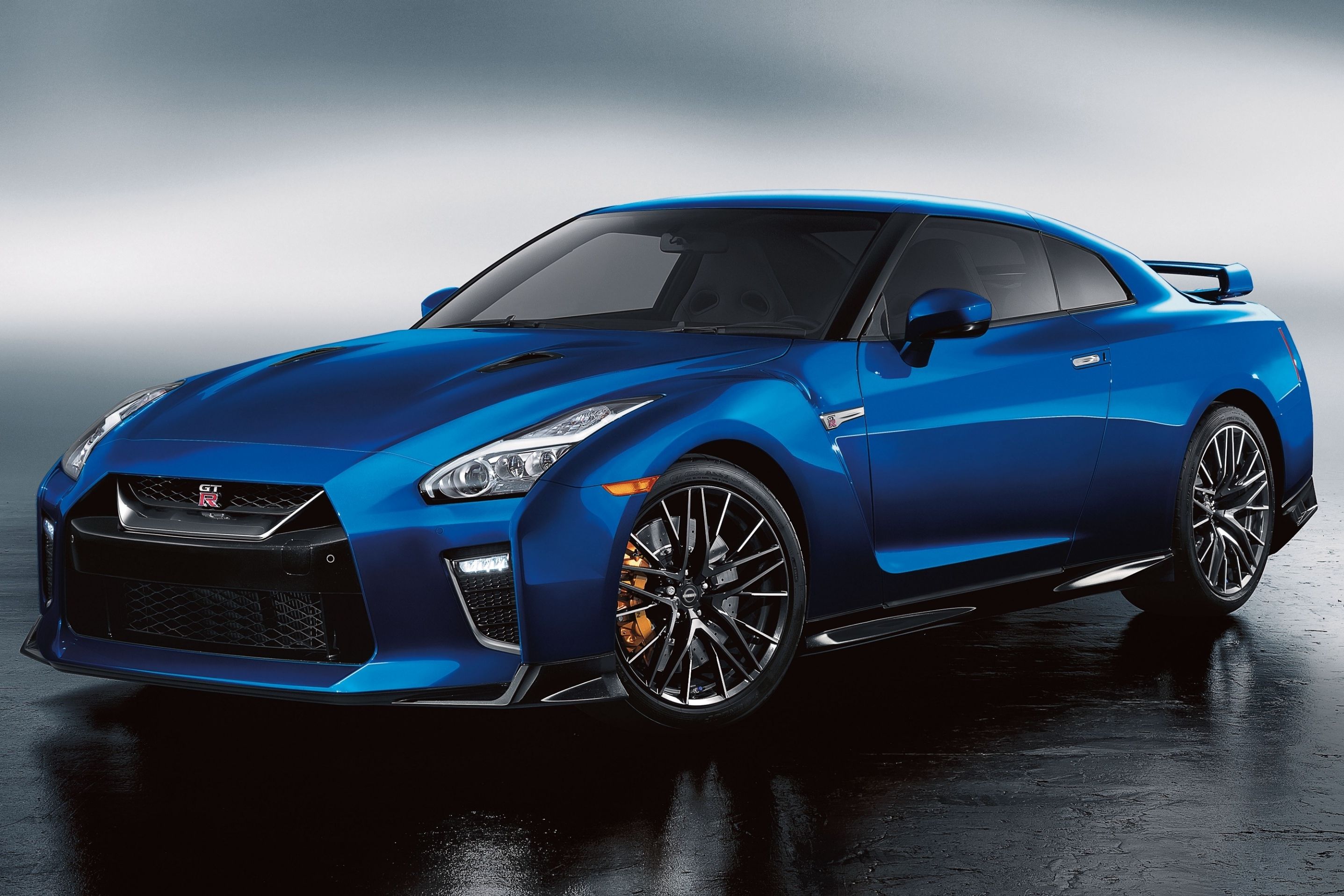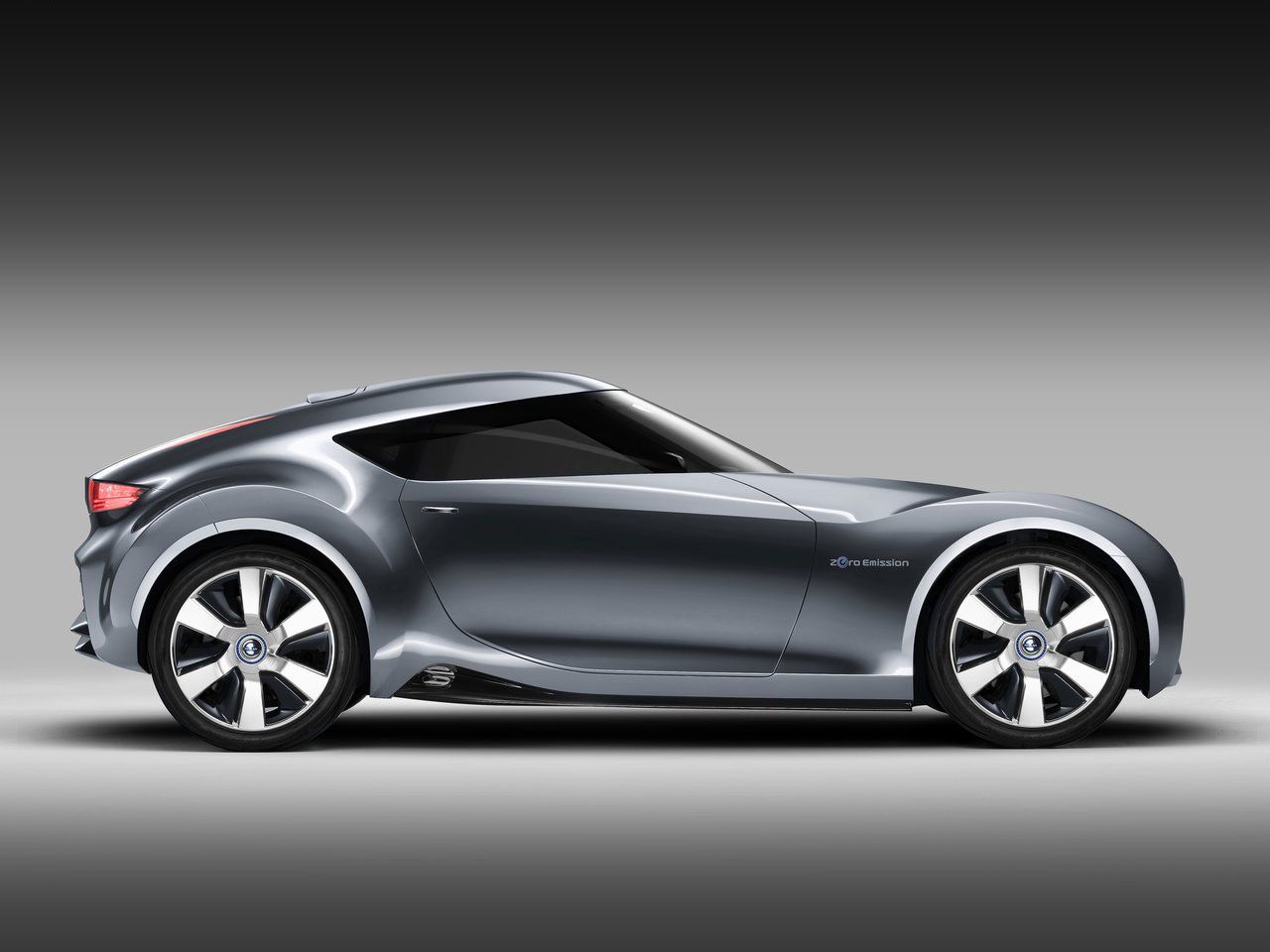
Over the decades, Nissan has managed to give us fantastic sports cars, one of the most iconic coupes ever made in the form of the GT-R, some legendarily stout workhorses, and a string of reliable economy and family cars. What we tend to forget is the long string of Nissan concept cars that explore the company's keen spirit of innovation and forward-thinking. None of the following vehicles made it into mass production, but many have had an impact on future cars or explored areas and ideas that, had there been a business case, Nissan could have pushed towards production. This is not a comprehensive list, but these are our favorite Nissan concepts from recent years, as well as a couple of earlier ones we think are important.
1. 2013 Nissan IDx Nismo
Much of the time, concept cars arrive and we instantly know they're never going to see production. The Nissan IDx Nismo got our hopes up, though. The idea of Nissan putting out a modern successor to the Datsun 510, complete with a coupe body style and rear-wheel drive is a succulent one. It generated a lot of hype, but the reality is that it would have competed with Nissan's own 370Z, which was only three years old then. On top of that, it would be an expensive proposition for a car everyone would have gotten excited about but, in reality, would have had too small of a market to make a business case for. Still, it would've made an ideal rival to the Toyota 86 in our books.
2. 2008 Nissan Bevel
For the Nissan Bevel concept, the automaker's California design group worked on building a multi-purpose vehicle focused on the driver's needs. Nissan was looking at an opportunity to create vehicles aimed at slim demographic slices to serve them as well as possible. In this case, the Bevel was aimed at "male empty-nesters actively engaged in hobbies, recreation, and community service." That means men between the ages of 45 and 60 years old and, to Nissan, the Bevel would be perfect as an extension of toolboxes, workshops, and garages. We can't say we're in love with the design, but the practicality was a worthwhile ideal.
3. 2001 Nissan Alpha-T Concept
Back in 2001, Nissan showed us a radical futuristic concept for its first full-size truck. It was silver and featured futuristic styling, a sharply sloped A-pillar, a spacious interior, and a deep cargo bed that included an electronic slide-out bed floor. The concept was displayed to stimulate consumer discussion while making Nissan's intent to enter the full-size truck market clear. "The alpha-T Concept pushes the envelope of contemporary pickup truck styling," said then CEO Carlos Ghosn. While no Titan ever arrived looking quite like the Alpha-T, looking back at it now it was definitely the Tesla Cybertruck of its era.
4. 2006 Nissan URGE
The Nissan URGE was shown at the 2006 North American International Auto Show in Detroit as an exercise in performance-oriented sports car design, but with an interesting twist. The basis of the URGE's design was rooted in an Internet survey of approximately 2,000 young car and gaming enthusiasts. The result was, overwhelmingly, that they wanted a small, fun-to-drive sports car stacked with the technology they use daily. At the time, that included MP3 players, cell phones, and gaming consoles. Another key concern was that the car would be exhilarating to drive, but wouldn't be so expensive they would have to sacrifice their budgets and social lives to buy and run. According to Nissan, the URGE was powered by a "quick, high-revving, small-displacement engine" and features an Xbox 360 for when you were stationary.
5. 2011 Nissan ESFLOW Electric Sports Car
In 2011, the world was awash with excitement at the prospect of mass-market electric vehicles. The Nissan Leaf was starting to reach dealership forecourts, and Nissan was looking at how it might push its technology forward into an electric sports car in the future. The ESFLOW was designed as a rear-wheel-drive two-seater with an electric motor for each driven wheel. According to Nissan, it would hit 62 mph in under 5 seconds and have a range of 150 miles, which was something to aim for in 2011. Its styling took influence from the 370Z, and it acted as a precursor to the Infiniti Emerg-e concept from a few years later.
6. 2005 Nissan Sport Concept
Nissan displayed the Sport Concept as something that could make it into showrooms in the not too distant future. That was in 2005, and, as much as we would love to have seen an affordable, performance-oriented entry-level coupe from Nissan, its probably for the best that it didn't go into production. Sporty hatches haven't faired so well here in the US, and that's probably why it remained a concept despite looking like it could have been a production car. It was a fair effort, though, with a body built from carbon fiber composites and various metals, and four-point harnesses inside - despite the fact that no one ever knew what sort of performance figures it was meant to produce.
7. 2019 Nissan Ariya
A much more recent concept that also looks like it could easily become a production vehicle is the Nissan Ariya. It debuted at the end of 2019 as an electric crossover and features technology that isn't unrealistic now. That includes a Virtual Personal Assistant, integrated video chat, ProPILOT Remote Park, ProPILOT 2.0 for hands-off cruising, and over-the-air updating for the software. It would need a few more hard controls on the dashboard, but, other than that, as Nissan's showcase for its future design direction and language, we could see it hitting the road, with rumors suggesting it will in 2021.
8. Nissan Concept 2020 Vision Gran Turismo
It's called the 2020 Vision Gran Turismo, but the concept was displayed in 2016 alongside the launch of the Grand Turismo Sport video game, despite being unveiled well before that in 2014. Nissan gave the project to young London-based designers who were given free rein to create the perfect supercar for their own Gran Turismo fantasy garage. Nissan still won't say if it has any design elements that will make it onto the next GT-R. However, the design is based around a four-wheel-drive chassis and comes wrapped in an advanced aerodynamic body that "hints as to how a supercar of the future might look." If the next GT-R actually looked like this, but with a realistic gap between the wheels and arches, we wouldn't be disappointed.
9. 2015 Nissan Juke-R 2.0
If you ever wondered what a Nissan Juke and GT-R would look like if they were melded together by a mad engineer, Nissan obliged with the follow-up to the original limited-production Juke R, the Nissan Juke-R 2.0, back in 2015. It's a Nissan Juke with the engine and running gear from the legendary Nissan GT-R shoehorned in. Nissan calls it the first crossover supercar, and it's hard to argue. The fresh bodywork on the little monster featured carbon-fiber and improved aerodynamics, and the GT-R's engine was upgraded to make 600 hp - the same amount as the GT-R Nismo. Performance figures were never released, but considering the original Juke R managed the 0-60 mph sprint in only three seconds, we expect this might've broken below that.
10. 1993 Nissan AP-X Concept
Going back to 1993, we have the AP-X Concept, which was designed "to combine pleasure with responsibility." It had a lightweight direct-injection V6 engine coupled to a high-performance Continually Variable Transmission (CVT). In fact, Nissan was the first automaker to put a high-torque CVT into production. The mission statement for the AP-X concept was performance and efficiency, and as well as being lightweight, the AP-X had a drag coefficient of just 0.20.
Its looks were penned by legendary designer Marcello Gandini, and rather than looking into the future, the AP-X was intended to show people what 1990s cars would have looked like if Japanese designers had been more forward-looking in the 1980s.
11. 1985 Nissan MID 4 (Type I) Concept
Neatly tucked away in the file marked "Nissan Concepts We Shouldn't Forget" is the original MID 4 Concept from 1985. It was supposed to go on sale in the late 1980s as competition to the European Porsche and Ferrari supercars. That would also have put it on the market just before the Honda NSX debuted. It clearly took its styling cues from Ferrari's Testarossa model, but under the cowling was a mid-mounted 3.0-liter V6 and a rear-biased AWD system. That same engine would later be twin-turbocharged in the 1987 MID4-II concept where it developed 325 hp. It also featured four-wheel steering, fully independent adjustable suspension, and a five-speed manual gearbox.
Aspects of the MID 4 made it into production cars, most notably the concept's AWD setup that evolved into the ATTESA system used in the legendary R32 generation GT-R.

